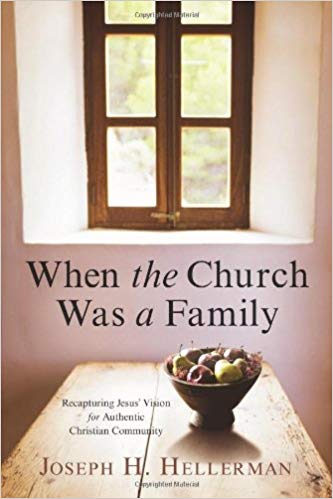Americans still pride themselves on their independence. But what if our individualism has distorted what Christ meant for the church?
Joseph H. Hellerman, a professor of New Testament and a pastor of a local church, believes American individualism has infected our understanding of what a church is supposed to be and how a church is supposed to function. Hellerman’s book, When the Church Was a Family, takes a hard look at how the early church was radically different from most Americans’ experience with church. Writing to pastors and church leaders, Hellerman desires to offer a biblical and historical model that our current churches might become healthier and more familial.
Familial cultures
Hellerman begins by critiquing the American ideal of individualism and examining other cultures who value the group over the individual. In doing so, he lays a foundation for readers to understand the world in which Jesus lived as well as the context in which his disciples established the early church. In the ancient world, the group took priority over the individual. Family, specifically patrilineal relationships, “demanded the highest commitment of undivided loyalty, relational solidarity, and personal sacrifice of any social entity in Jesus’ strong-group Mediterranean world. And major life decisions were made in the context of the family” (31).
Even though this might make the independent American bristle, Hellerman argues that our “freedoms, as intoxicating and exhilarating as they often are, have pushed us over the edge emotionally. We are reaping the consequences of decisions that were never meant to be made—and lives that were never meant to be lived—in isolation” (29). Our independence affects our own health but also America’s churches’ health as well.
Saved into a family
When a new believer converted to Christianity in the first or second centuries, he was welcomed into a new family—the family of God—and this family took precedence over his natural family and his own independence. An American Christian might claim allegiance to God, family, church, and others, in that order of priority, but in the New Testament church loyalty to this new family was so strong that there was not a difference between a commitment to God and a commitment to God’s family. An unchurched Christian would not have existed in the New Testament world.
The early church had big demands on new converts in all areas of life. They were expected to forsake their biological family, share their resources, give up ungodly lifestyles, and make decisions in their lives for the good of the church. When we compare this to our churches’ current demands on people—come as you are; give what you want; and feel comfortable while you’re here—it seems counterintuitive that the early church was the one that was thriving. But Hellerman points out it wasn’t just the doctrine of the early church that attracted people, it was also the way the church lived. Their community, which so closely represented a family, drew people to the early church.
Our independent mindframe has even affected our understanding of salvation. Hellerman critiques use of the term “personal savior.” He argues thats this term is absent from the Bible and is wholly unhelpful in understanding how our salvation places us in a new family. “The saving work of Christ,” he writes, “therefore has a corporate, as well as an individual, dimension” (96). We are saved into community, into a new family. We must understand that salvation reconciles us horizontally and vertically. If I think back to every church youth event I’ve ever been to, Hellerman’s problem with using the expression personal savior makes sense. I know of a lot of commitments to a personal savior that cost so little and didn’t last much longer than a week beyond the end of the event.
Hellerman ends his argument by showing how Jesus gave the church a model for leadership. With God alone as the father of the church family, a plurality of servant-leaders provides accountability for the pastors providing a safeguard protect the family from abuse, from leaders using their platform for fame, and from false teaching. But it also is a model for the church to see relational health and maturity.
Potential problems
There are a few parts of When the Church Was a Family that may be problematic to readers. In a book focused on the church, Hellerman doesn’t spend any time on covenant membership. He stresses the importance of commitment and sticking around even when relationships get messy, but in our transient and consumeristic culture, a covenant membership reminds members that they are a family.
Additionally, Hellerman’s conclusion that “relational environments in our churches must take precedence over our larger weekly gatherings” downplays the importance of the corporate weekly gathering where the church experiences the preaching of the Word, psalms and spiritual songs, prayer, and other means of grace. Hellerman also shares an anecdote about a man who was part of his church’s worship team for a year before he came to salvation. These problems don’t negate the benefits of the book though. Our churches do need to look more like the New Testament church and Hellerman has provided a helpful framework for church leaders.
Jesus asked his followers to forsake their strong biological familial relationships for a new family—the family of believers—led by their father, God. For a church to be a family, a church body should share resources and emotions, stick around even when relationships are hard, and make decisions in the context of how it affects the church family, not just the individual. The cost is high. Our churches would do well to consider where our practices and relationships are elevating the individual rather than drawing our members closer together for the glory of God and the sanctification of each other. When the Church Was a Family is quite the challenging read, not because of its syntax or semantics, but because the message is just that convicting.










